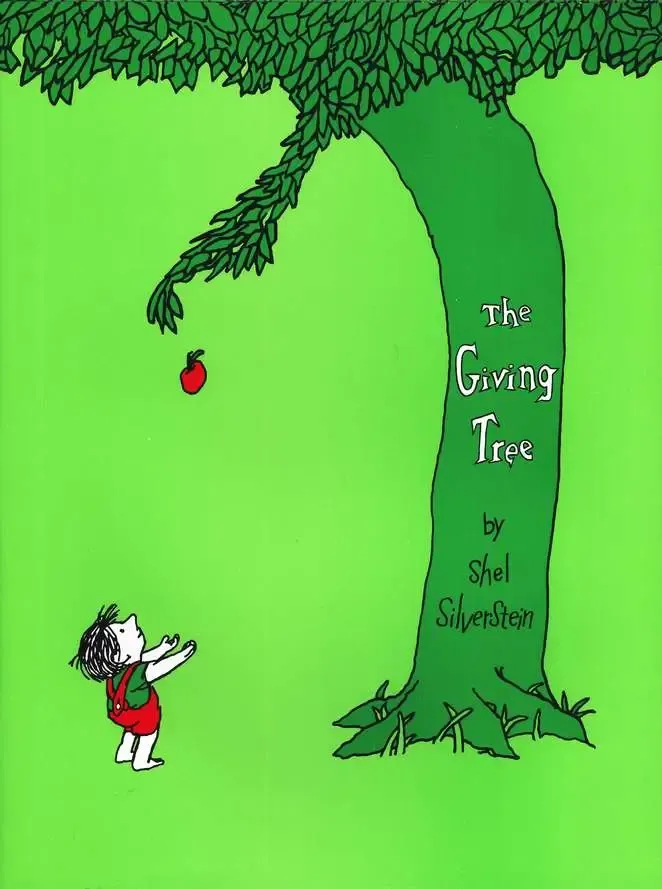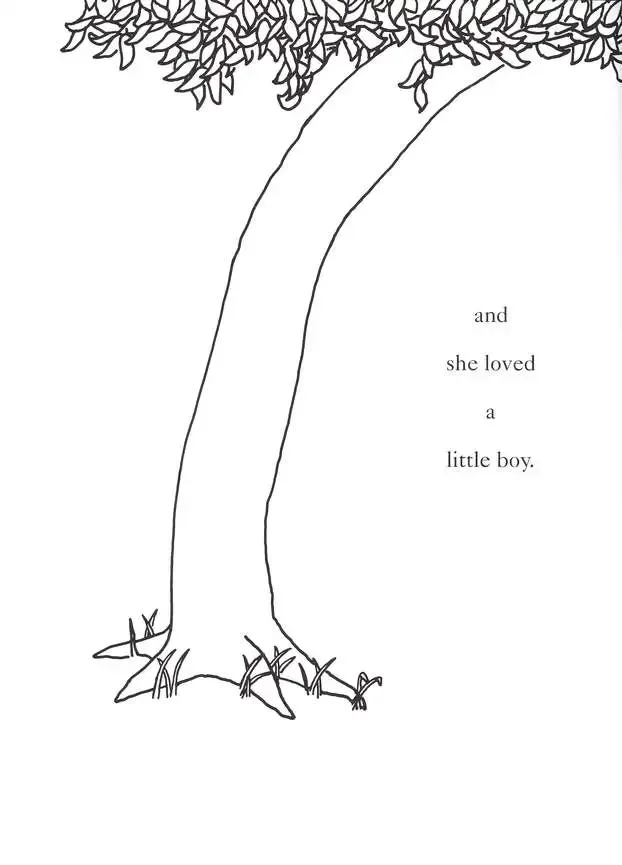The Giving Tree is one of those rare picture books that continues to resonate across generations. Its simplicity belies the deep and complex emotions that the story evokes, making it a timeless tale of love, sacrifice, and the passage of time.
The story follows the relationship between a boy and a tree. As a child, the boy plays in the tree’s branches, enjoys its shade, and eats its apples. Over time, the boy grows into adulthood, and his needs change. The tree, ever-giving and loving, provides him with its apples, branches, and eventually its trunk, until all that remains is a stump. In the end, when the boy is an old man, he returns to the tree, now too tired to do anything but sit. The tree, in its final act of selflessness, offers him a place to rest.
What makes The Giving Tree so powerful is its emotional complexity. On the surface, it’s a simple story about a tree that gives everything it has to someone it loves. But beneath this simplicity lies a profound exploration of selflessness, unconditional love, and perhaps the costs of one-sided relationships. The tree’s love for the boy is boundless, but the boy’s consistent taking, without ever giving back, can be interpreted in many ways, making this a book ripe for discussion.
Some readers view the tree as a symbol of unconditional, parental love, where the parent (tree) gives everything for their child, without expecting anything in return. Others interpret the story as a cautionary tale about the consequences of selfishness and how relentless giving can deplete even the most generous souls. The ambiguity is part of the book’s magic, as it leaves room for readers to project their own interpretations and feelings onto the characters.
Silverstein’s iconic black-and-white line drawings are as simple and raw as the text, allowing readers to focus on the emotional core of the story. The minimalist style also emphasizes the universality of the tale, making it feel timeless and applicable to many stages of life.
Though The Giving Tree has garnered some criticism for its portrayal of a seemingly one-sided relationship, it continues to be a powerful and thought-provoking book that touches on themes of love, sacrifice, and human nature. Whether seen as a heartwarming or bittersweet tale, its ability to provoke deep emotions and contemplation is undeniable.
The Giving Tree is a classic for a reason, its deceptively simple story offers layers of meaning that resonate differently depending on the reader’s age and perspective. Whether it inspires feelings of warmth, sadness, or reflection, it remains an unforgettable and important piece of children’s literature.
Questions to ask while reading:
- How do you think the tree feels throughout the story?
- Why do you think the tree loved the boy in the beginning?
- Is the boy happy at the end of the story?




